A selection of earthart works installed in the USA.
Here's a link to the Chesapeake Bay Magazine review of Art on the Waterfront (2018) featuring my Pollinator Hexagon V installation
https://chesapeakebaymagazine.com/art-on-the-waterfront-brings-inspired-outdoor-art-to-south-baltimore/
Here's a link to the Chesapeake Bay Magazine review of Art on the Waterfront (2018) featuring my Pollinator Hexagon V installation
https://chesapeakebaymagazine.com/art-on-the-waterfront-brings-inspired-outdoor-art-to-south-baltimore/
-
Pollinator Hexagon IVPollinator Hexagon IV (2018); Installed for the Art on the Waterfront show in Middle branch Park. The stone was delaware river gravel. Central zone; Rudbeckia maxima (giant coneflower) Middle zones; Echinacea purpurea "magnus" (purple coneflower) Outer zones Asclepias tuberosa (butterfly weed)
-
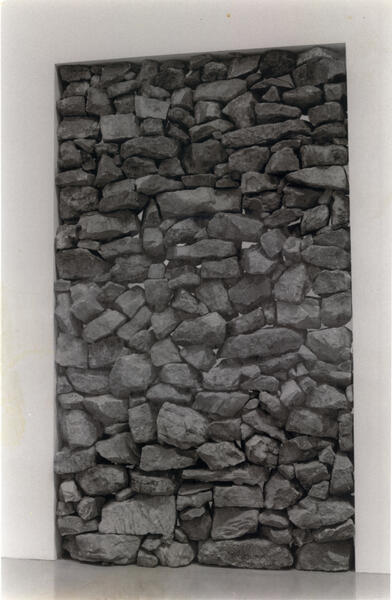 Jannis Kounellis stone wall 2002This wall was installed as part of the 2002 Arte Povera show in the Hirshhorn museum in DC. We followed the instructions of the artist to create a free standing dry laid wall that was visible from both sides using local stone, in this case western MD fieldstone.
Jannis Kounellis stone wall 2002This wall was installed as part of the 2002 Arte Povera show in the Hirshhorn museum in DC. We followed the instructions of the artist to create a free standing dry laid wall that was visible from both sides using local stone, in this case western MD fieldstone. -
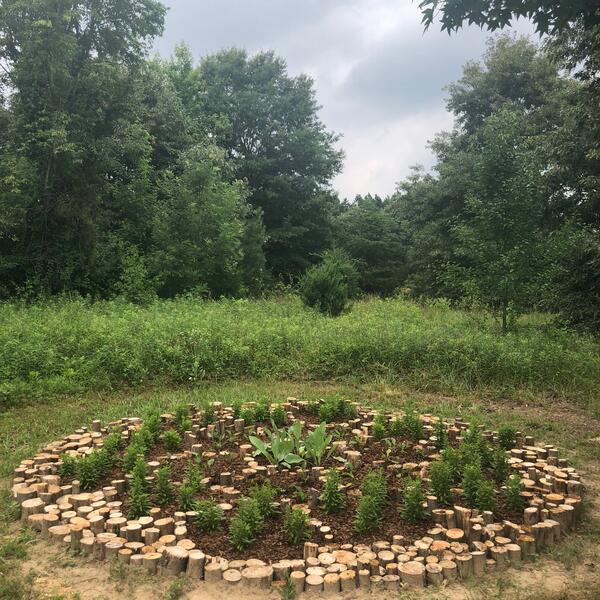 Pollinator Hexagon VInstalled at Adkins Arboretum on the Eastern shore of MD in 2018 for the Artists in dialogue with Nature sculpture exhibitio. The installation features found wood usded to construct the hexagon and native plants to attract pollinators.
Pollinator Hexagon VInstalled at Adkins Arboretum on the Eastern shore of MD in 2018 for the Artists in dialogue with Nature sculpture exhibitio. The installation features found wood usded to construct the hexagon and native plants to attract pollinators. -
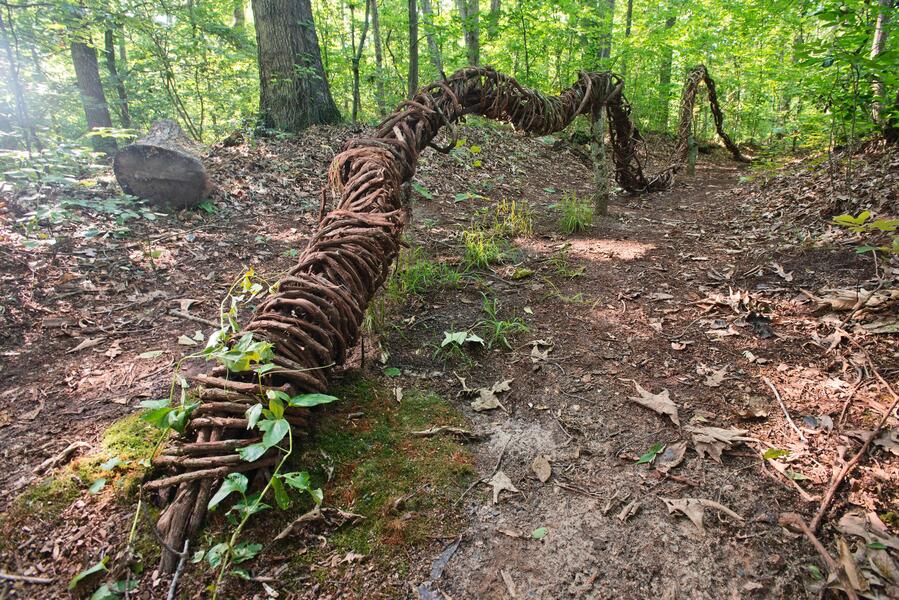 Swalevine 2016, Adkins Arboretum,MDThis installation was part of the "Artists in dialogue with nature" outdoor invitational at Adkins Arboretum, installed in late spring/early summer 2016. The installation was constructed using mainly non-native grape vines cut from the surrounding forest. The vines were twisted together to form a long (approx 85'), snaking sculpture which followed the course of a swale which may have been a road at some point in time. In the construction of the installation, dead branches were blown off and dropped into the swale, these branches were dug into the ground and used to support the heavy mass of vines. The sculpture was deemed finished when the vines became too heavy to manipulate. The native vine passionflower (passiflora incarnata), was planted at the beginning of the swalevine. The installation brings up the subject of native and non-native species and their battle for dominance in the american ecosystem.
Swalevine 2016, Adkins Arboretum,MDThis installation was part of the "Artists in dialogue with nature" outdoor invitational at Adkins Arboretum, installed in late spring/early summer 2016. The installation was constructed using mainly non-native grape vines cut from the surrounding forest. The vines were twisted together to form a long (approx 85'), snaking sculpture which followed the course of a swale which may have been a road at some point in time. In the construction of the installation, dead branches were blown off and dropped into the swale, these branches were dug into the ground and used to support the heavy mass of vines. The sculpture was deemed finished when the vines became too heavy to manipulate. The native vine passionflower (passiflora incarnata), was planted at the beginning of the swalevine. The installation brings up the subject of native and non-native species and their battle for dominance in the american ecosystem. -
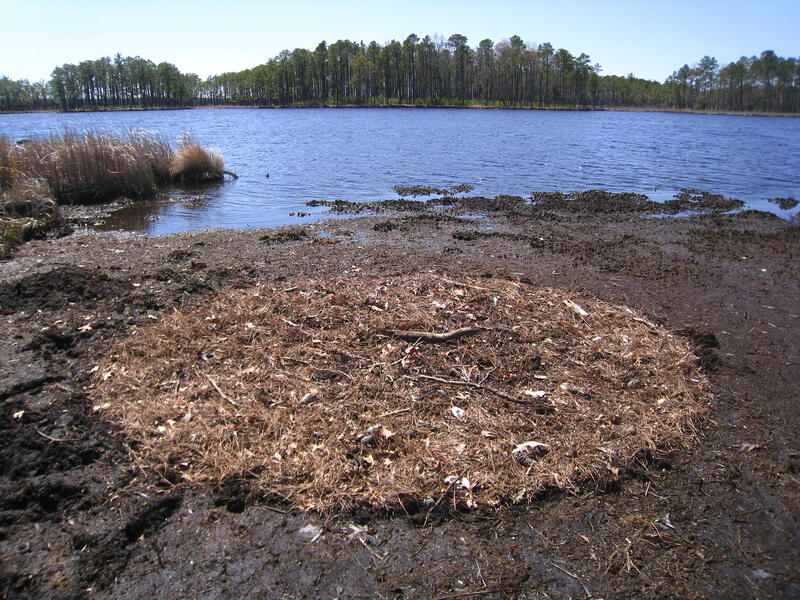 Blackwater project 2009North side of river This photo shows the leaves transported from the south side of the river and placed in a 10ft diameter circle on the north side of the Blackwater river. This piece talks about the runoff of fertilizer from farmland close to the river and the continuing pollution of the Chesapeake Bay.
Blackwater project 2009North side of river This photo shows the leaves transported from the south side of the river and placed in a 10ft diameter circle on the north side of the Blackwater river. This piece talks about the runoff of fertilizer from farmland close to the river and the continuing pollution of the Chesapeake Bay. -
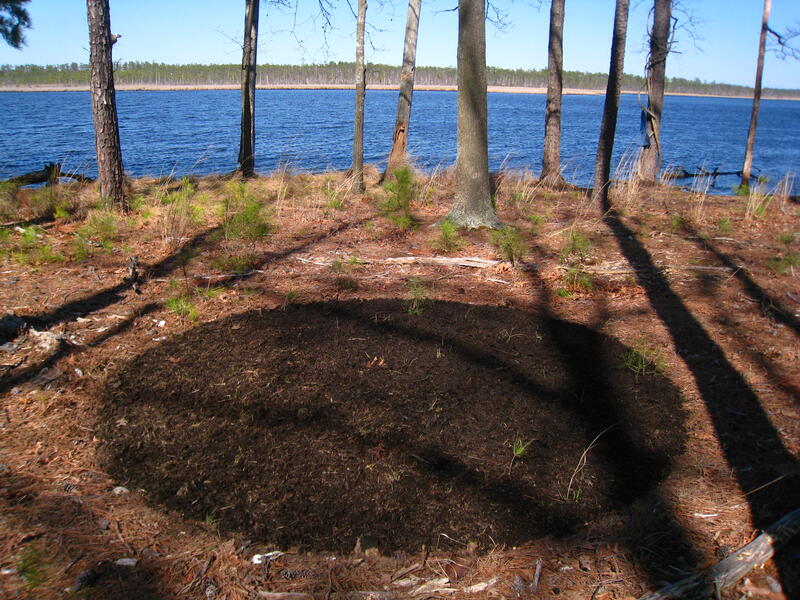 Blackwater project 2009Southern side of river; Blackwater River on the Eastern shore of Maryland. This project involved transferring 2 circles of surface debris (10ft in diameter) from one side of the Blackwater river to the other. This was done using a kayak towing a small barge. This photo shows the fine mud transported from the north side of the river and placed in a circle on the south side.
Blackwater project 2009Southern side of river; Blackwater River on the Eastern shore of Maryland. This project involved transferring 2 circles of surface debris (10ft in diameter) from one side of the Blackwater river to the other. This was done using a kayak towing a small barge. This photo shows the fine mud transported from the north side of the river and placed in a circle on the south side. -
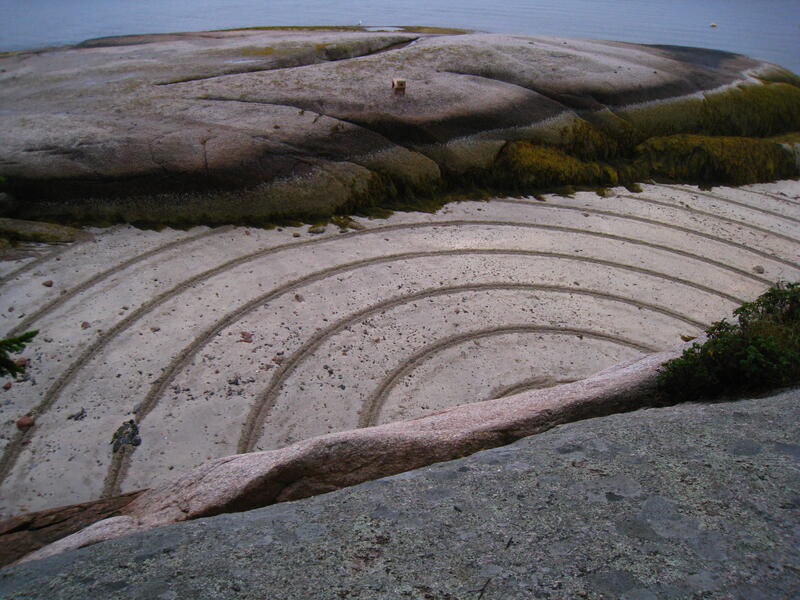 Beach circles, Deer Isles MA 2009Circles in sand on the beach in Deer Isles. MA
Beach circles, Deer Isles MA 2009Circles in sand on the beach in Deer Isles. MA -
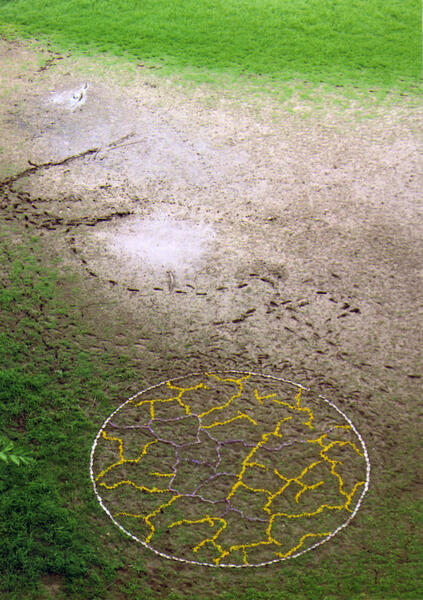 Gunpowder River project 2007Installation on the Gunpowder river, Phoenix MD. Sneezeweed flowers, freshwater mussels and butterfly weed used to mark the mud cracks on the Gunpowder river. The mussels marked out a 20ft diameter circle on the river bed while the level was low.
Gunpowder River project 2007Installation on the Gunpowder river, Phoenix MD. Sneezeweed flowers, freshwater mussels and butterfly weed used to mark the mud cracks on the Gunpowder river. The mussels marked out a 20ft diameter circle on the river bed while the level was low.






